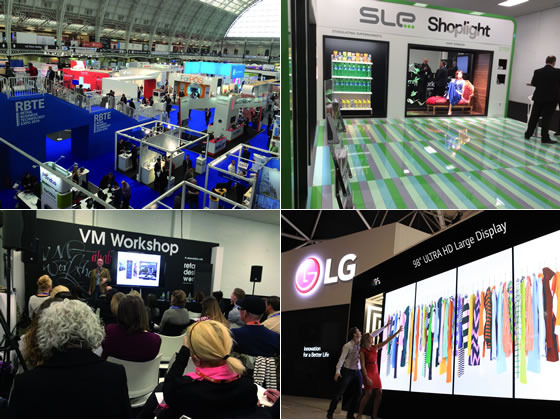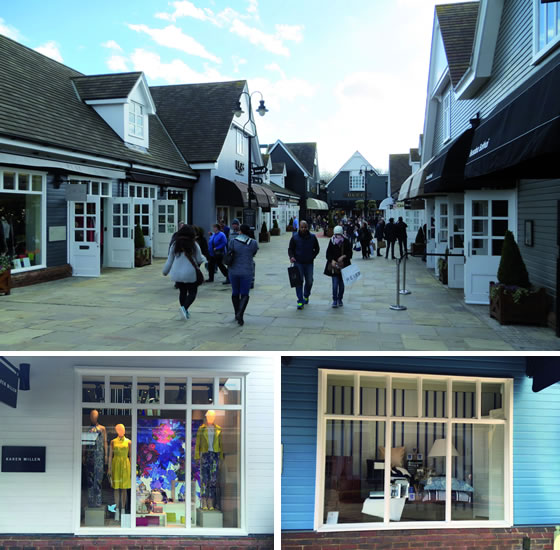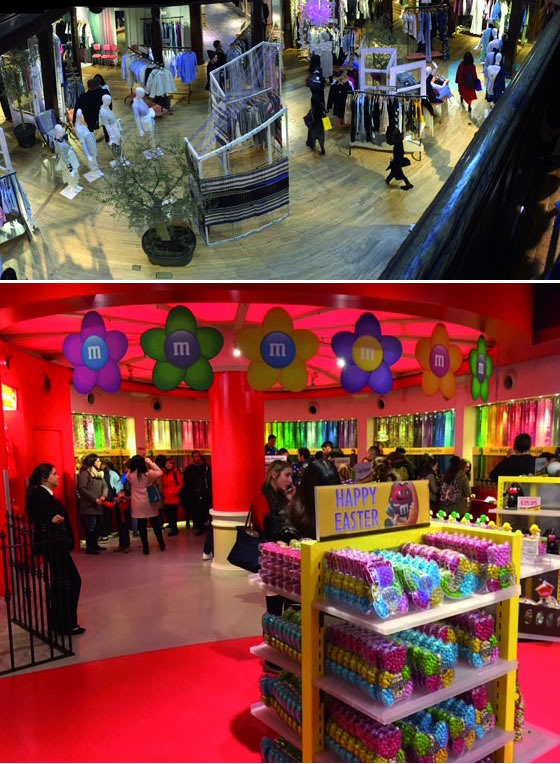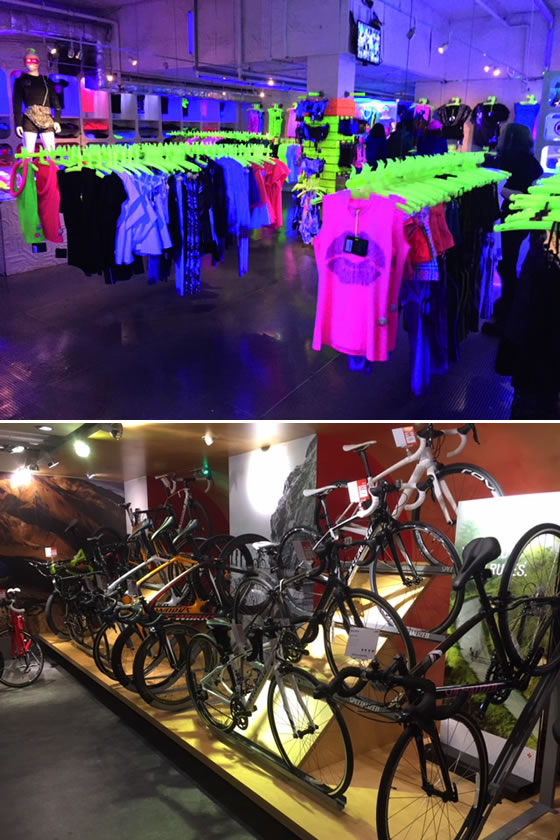[button link=”https://www.arredanegozi.it/2016/05/retail-londra/” icon=”none” target=”” color=”a30b0b” textcolor=”ffffff”]TESTO ITALIANO[/button]
Dear Readers,
I have a headache… I feel dizzy… I lost all my energy… but I am happy.
This is how I feel after 4 days in London visiting an average of around thirty shops and walking 15 kilometres every day.
Going back to London after some years is always interesting, engaging and – obviously – also tiring.
It is not so easy to deal with a plethora of smells, fragrances and many different exciting things: everything is aimed at catching your attention, even if not everything is worth it or is as surprising as it seems.
Why London?
First, because it is one of the world’s top business capitals, but also because we wanted to develop our networking opportunities at RBTE | RETAIL DESIGN EXPO and visit the Bicester Village, one of the most popular outlet shopping centres in Europe.

We really appreciated the exhibition, and even if it is more suited to the needs of retailers than those of retail and visual merchandising agencies, it gave us food for thought and we got new contacts.
It is worth mentioning the sections focused on digital communication and on software and POS solutions, the two areas which were definitely given greater emphasis.
In particular, we were impressed by the excellent technological performance of high-resolution flat-panel displays. It is likely that, in the future, they will be increasingly used in stores and window displays, maybe gradually replacing all paperboard or durable materials which are now still very widespread.
We also attended two workshops on visual merchandising strategies, but we didn’t find them particularly interesting. In Italy we are still competitive.
In short, we strongly recommend this event to insiders, but –especially with regard to furniture manufacturers– it has nothing to do with the EuroShop retail trade fair in Germany.
After visiting the fair, we made a great “effort” and moved to Bicester, a remote town in the countryside north of London, to reach one of Europe’s top outlet shopping centres.

We arrived at 10 a.m. but, besides the extremely efficient railway line connecting Liverpool Street with the Village, our shopping experience in the foggy moorland didn’t get off to a good start.
Actually, starting from 11:00 we began to see the first “hordes” of frantic shoppers approaching the mall, and we had the feeling that they were mainly foreign visitors and tourists, given that it was Thursday. Anyway, at around noon the shopping centre was really crowded.
Compared to other Italian outlets, the Village offers better facilities, services and, above all, brands. The items are certainly not cheap, and you can find bargain prices only in the corners with the last pieces available
The architectonic structure of the building features a pleasant Anglo-Saxon style, yet there are not many shops. The sales points are not large and offer a sort of assisted self-service.
Since we are professionals with a 360-degree approach to retailing, during our visits we analyse every single aspect of both visual merchandising techniques and business dynamics. In this case, we were surprised by the low level of surveillance to prevent shoplifting. Some shops were not provided with any anti-shoplifting system and, where present, they were turned off. Maybe these shops also rely to a certain extent on the “lease-line” role played by staff at the front of the store, even if they seemed to be more concerned with welcoming and greeting customers than with supervising them.
On the other hand, the positive aspects of the Village shops include the extensive use of visual merchandising, the cleanliness of the store and a wide offer which never tends to be standardised.
However, we didn’t like the window casings: as you can see in the pictures, they often hinder the overall view of the shop window.
In some stores it is customary to display products on three levels, even very high, so that they are not accessible to customers unless they are placed in gondola ends too.
In brief, our opinion on the Village is generally positive, and if you are in London it is well worth a visit, also thanks to the extremely efficient public transport system.
We continued our journey in the downtown area starting from Neal Street, in Covent Garden, one of the most famous shopping areas in London. I remembered that it was characterised by international chain stores, but I hoped that more niche stores would be opened during the last years.
Actually, little has changed and we were quite disappointed with some stores, including Niketown, Urban Outfitters and Diesel (above all with regard to their product offer). Their formats were not particularly interesting due to their global nature, and we found them very similar to those in Italy and in the rest of Europe. However, we would like to mention two sales points standing out for their original concepts: SIZE (sneakers) and MELISSA (Brazilian footwear brand)
Just a few steps away from Covent Garden is Oxford Street, the true spirit of globalisation. I won’t tell you about H&M, Primark, Bershka, Niketown, etc., since their concept stores are the same as in London, Milan or Rome.
With regard to the central shopping area, we can’t go on without mentioning M&M’s flagship store, the ultimate expression of merchandising (and maybe of uselessness). Here you can find three floors with plenty of candies, sweets, t-shirts, cups and anything that comes to your mind when thinking of the characters of this popular brand.

We must recognise that the store was fitted out and enhanced very well, with great attention to details. It also has some interactive corners where clients can play, have fun and become the protagonists.
I would also like to say a few words about Harrods, Marks & Spencer, John Lewis, Selfridges and Liberty, the oldest department store in London.
They are all located in a very small area, which is considered the London area, and we were stunned by the quantity, the offer and the attendance. Here you can find everything you need: from clothing to footwear, from household products to food, from underwear to fashion.
You can do nothing but shop!!!
We are sure that many of our readers already know some of them, that’s why we will focus on Liberty. It encompasses the true essence of the British style: wood furniture, low ceilings, creaky stairs, an anachronistic yet distinctive layout, vintage lifts and a cosy atmosphere, just like an old charming library. Here too, the product range is extremely wide and heterogeneous.
Then we moved away from the shopping area with the highest concentration of international brands in London, and headed towards Bricklane and Camden Town. Hip, hip, hooray!!!
Here, each street and each alley is lined with simply bizarre and psychedelic shops –like Cyberdog–, small vintage boutiques with unusual signs, second-hand markets, and everywhere the air is filled with fragrances and aromas (…to say the least).
As you can probably infer from the previous lines, I really love these areas which –fortunately– are resisting globalisation to some extent.

I’d like to conclude this article with an important remark: visual merchandising, window dressing and specialisation still play a key role in the retail industry.
We have also observed that the cycling industry is thriving. A good example of such growth is Cycle Surgery, which has created a unique boutique for all cycling enthusiasts.
Last but not least, a new fashion trend is becoming more and more popular among women, who choose a “yoga/runner” style, even for their everyday wear.
In particular, the flagship store Lululemon Athletica caters not only to runners and yoga practitioners, but also to all those who like wearing skinny yet comfortable clothing.
by Paolo Zanardi – XT srl
by AN shopfitting magazine no.132 ©


